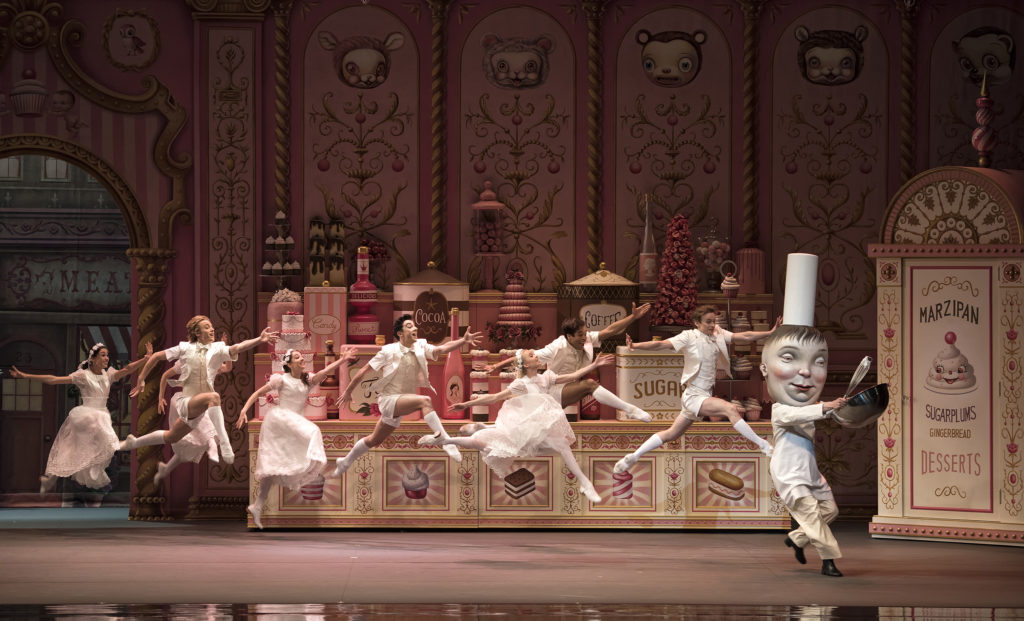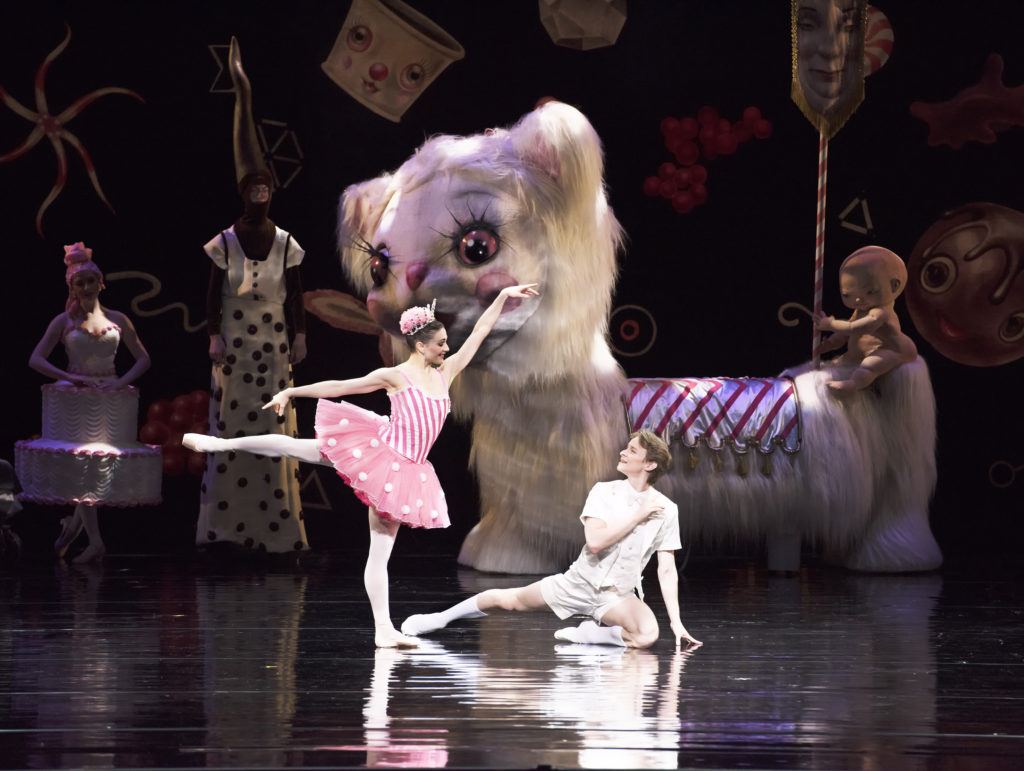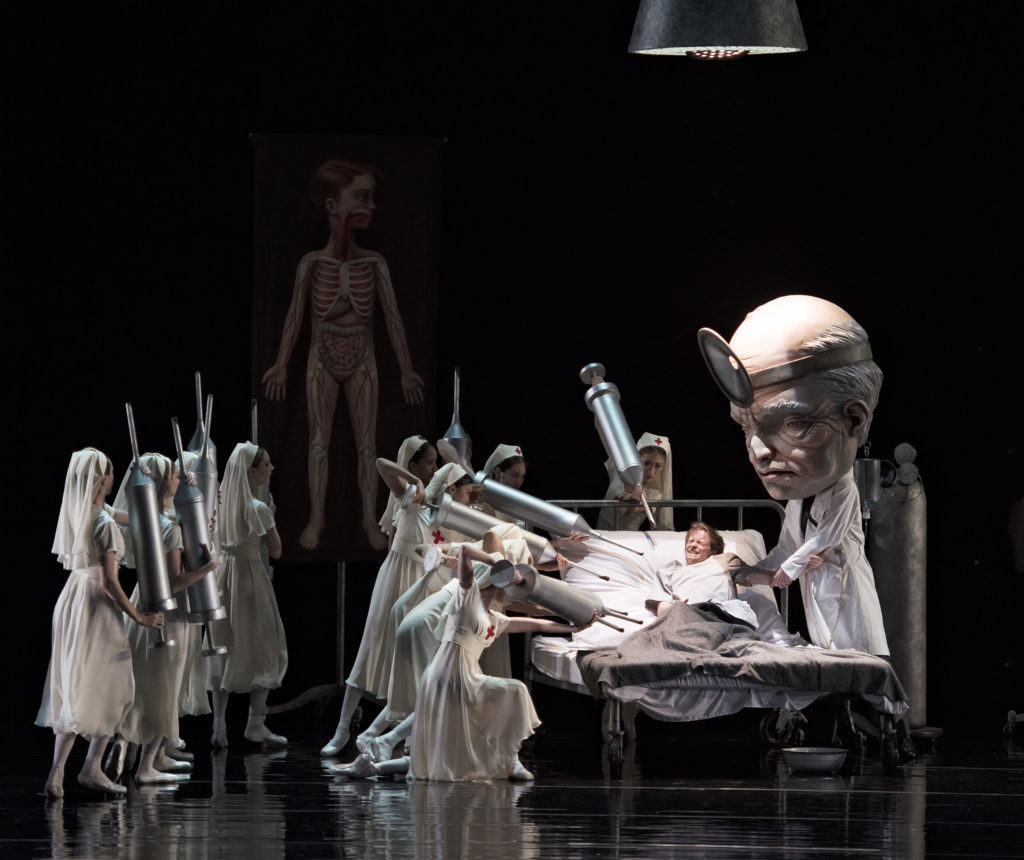“Whipped Cream”—ABT’s World Premiere is Whimsical & Sugary Sweet
By archaicpress@gmail.com / on March 19th, 2017 / in ARCHAIC PRESS, Entertainment, FeaturedWith the World Premiere of their newest show, the American Ballet Theatre and choreographer Alexei Ratmansky prove that “Whipped Cream” can be far more whimsical than sugary sweet!
As a critic and patron of the art, I often find with ballet that I’m torn between the tradition that I know so well and the contemporary that brings new ideas and stories to light. It’s a rare occasion when I am able to have a bit of both cakes and eat them too, but with the world premiere of the ABT’s “Whipped Cream”, let’s just say that I was sweetly surprised.
Premiering at the Segerstrom Center for the Arts in Costa Mesa earlier this week, “Whipped Cream” debuted with a simple story and high expectations. But what audiences and critics alike did not know was that there were easily enough surprises to keep them coming back for more!

Photo Courtesy of Gene Schiavone
Inspired by a two-act ballet originally choreographed by Heinrich Kröller and first seen at the Vienna State Opera in May 1924, “Whipped Cream” has a simple story steeped in tradition. But seen through the fresh eyes of Ratmansky and artist Mark Ryden, the score and the characters are given new life and a new look. The premise is simple, even somewhat reminiscent of a Nutcracker tale—a young boy celebrates his first holy communion with decadent desserts at a confectioner’s shop, but when he overindulges on whipped cream he is taken to a hospital where dreams bend reality, and the story of ingredients and pastries comes to life.
In dreams, Ryden envisions a strange and whimsical story of a shop brought alive, where creatures and confections take dominion of the stage. Marzipan archers, spear-wielding Sugarplums and even militaristic Gingerbread Men are in the first ranks, and then the stars take the lead. Princess Tea Flower appears, dazzling the audience until three sweet suitors arrive, in the forms of Prince Coffee, Prince Cocoa, and the ever-entertaining Don Zucchero, each who tries to win her affection. But Ryden’s artistry doesn’t just inspire the look of the characters, it largely affects the look and feel of the ballet. Beautiful artistry turns whimsical, as the story of a surreal delirium drives Ryden further into something of a strange dream. But wherever Ryden’s vision brings a contemporary light, Ratmansky drives the production with clever choreography and tricks of a traditional ballet.
“Ratmansky, himself, is in many ways a traditionalist” dance historian and author, Elizabeth Kaye says. “His ballets are always within the classical steps, the classical vocabulary.”
“He rightly makes a point that classic steps make dancers look beautiful. At the same time, he pushes dancers to move in ways that go beyond the usual motions of what dance and movement should be.”

Photo Courtesy of Gene Schiavone
Without a detailed account of Kröller’s original choreography, Ratmansky was against all odds in choreographing this ballet, however, he was also free from limitations. And in this creative freedom, Ratmansky was able to imbue each confection and creature with a rich history and unique movement. Character dances, similar to those of specific regions, allow each dancer or group of dancers to harness their own persona, and overall helps the ABT bring these dreams to life. And while not all choreographers have the artistic talent to tackle such a feat, Ratmansky uses his love of the music to bridge the gap between the story and what he imagines a modern Kröller ballet could be.
“From the very start he has had a knack for literally seeing music—for taking music and translating it into ballet” Kaye says. “And Ratmansky has an ability, even as a very young beginning artist, for making music visible.”
“What he is doing is taking two conservatisms—classics steps and classic stories—and utilizing them in ways that make ballet new, and live, and sparkling.”

Photo Courtesy of Gene Schiavone
Without a frame of reference for this ballet, similar to Ratmansky, I feared that audiences would not know what to expect from “Whipped Cream”. But what I came to find was that, like myself, audiences were fresh-eyed, optimistic and easily captivated by the movement and artistry accompanying this story.
“He has learned something that is essential for a choreographer” Kaye says. “How to highlight a dancer’s assets, while obscuring their weaknesses.”
And while there were few weaknesses that I could see, what surprised me most on opening night (March 15) was the caliber of the dancing. Never has the American Ballet Theatre looked so beautiful, so talented, and so together as a whole, even in spite of the whimsical sets and costumery that one could expect to distract from their technique. And that, in itself, is the greatest testament to Ratmansky’s ability to choreograph such a unique ballet.
“Whipped Cream” debuted March 15th, 2017 and continues through Sunday March 19th at the Segerstrom Center for the Arts in Costa Mesa, CA. For more information on the ballet please visit www.scfta.org, or purchase your tickets at the door. Box Offices open prior to every performance.
